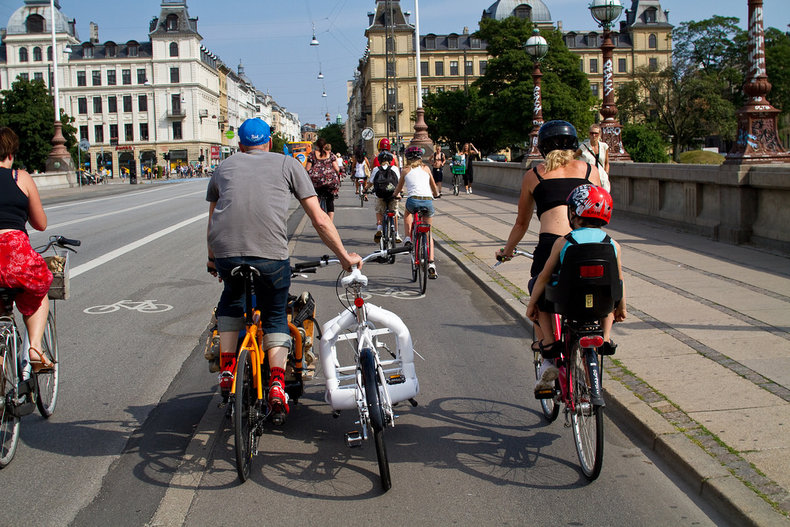
 |
A-Z | Popular | Blog | Top | Search » |
|
Cities 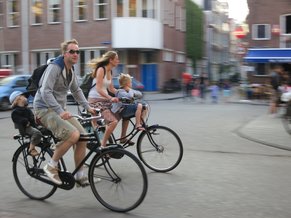 City Culture 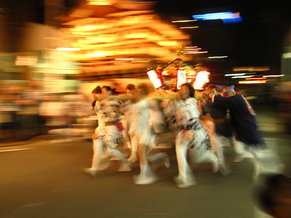 Related Topics
Night Economy  Public Space 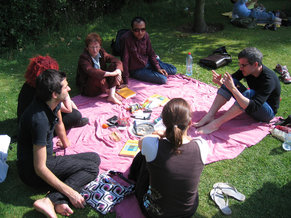 Urban Design Terms 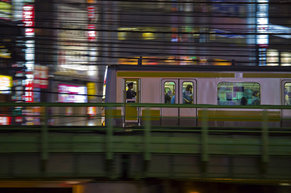 Urban Planning 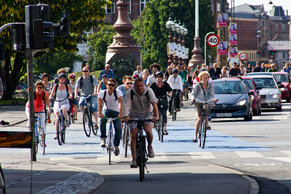 Resilient Cities 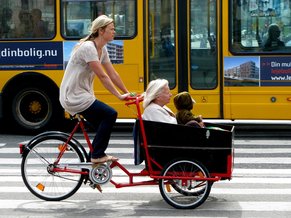 |
35 Examples of Sustainable Urban Design John Spacey, updated on
 Adaptive ReuseReusing old buildings and infrastructure for new purposes. For example, converting a factory into offices.Architectural ConservationSaving sites of significant architectural, cultural or historical value.Bicycle ParkingEfficient bicycle parking at strategic locations such as train stations. Requires a method of dealing with abandoned bicycles and rationing space. Charging a small hourly fee often isn't a bad idea.Bicycle SharingProviding bicycle rentals at locations such as train stations. Requires diligent management such as regular maintenance processes.BiodiversityThe goal of providing habitats for a great variety of organisms that are compatible with the local environment.Blue SpacesBeaches, waterfront parks, lakes, rivers, open air streams, canals and fountains.BrownfieldsBrownfields are abandoned sites that are polluted due to commercial or military activities. They often require an expensive cleanup but may represent a unique opportunity to revitalize a city.Clean EnergyMoving cities towards energy self-sufficiency by putting solar panels wherever there is free space. In theory, any surfaces exposed to sunlight such as roads can generate clean energy.Community GardeningProviding space for school children, seniors and other people in a community to take responsibility for a garden. Requires some ground rules such as prohibiting the use of harmful chemicals.CompactnessA move to making things smaller and closer together. For example, efficient rail may handle more passengers than a highway that consumes far more space.Cycle HighwaysWide cycle paths that are fully separated from roads. Designed for distance bicycling connecting strategic locations such as a suburb with downtown.District HeatingA centralized facility that provides heating and cooling to buildings in a neighborhood. Allows for sustainable approaches such as deep water cooling.Energy EfficiencyReducing energy consumption by installing efficient systems and reducing waste such as unnecessary lighting.Green RoofsThe planting of vegetation on roofs to reduce stormwater runoff, clean air, insulate buildings, moderate urban heat islands and beautify a city.Green Walls & Green FacadesTwo methods of growing plants on unused walls.High Performance BuildingsBuildings designed to produce little or zero environmental impact. Typically highly self-sufficient in terms of energy and water.Highway RemovalMany cities have devoted a great deal of space to roads and highways. Improvements in public transport and urban density may allow this space to be reallocated to worthy initiatives.Linear ParkLong parks that can be used for cycle paths and sidewalks that are pleasantly walkable.Passive DesignArchitecture and infrastructure that makes use of natural energy without converting it to electricity.Pocket ParkConverting vacant lots to small neighborhood parks or community gardens.ProximityA term for closeness. Typically associated with village-like neighborhoods that offer employment, schooling, shopping, dining, entertainment, public space, medical services within walking distance.Public SpacePublic spaces allow for freedom of movement and provide spots for exercise, creativity, hobbies, personal solace, social and family activities.Rain GardenA garden designed to absorb and clean water to reduce and purify runoff.Rainwater HarvestingCollecting and using rainwater where it falls. Reduces stormwater and improves resilience to water shortages.Regional LinksDesigning highly connected infrastructure such as rail improves its value and usage rate.Resilient CitiesDesigning cities to be resilient to physical, social and economic stresses.ReuseReusing buildings, infrastructure, materials and resources such as water.Soft EngineeringUsing rocks and plants as opposed to concrete to reinforce shorelines and hills.SuperblocksClosing small roads to create large city blocks with ample public space and wide sidewalks.Sustainable TransportTransport such as light rail and high speed rail that reduces the use of space and energy.Urban ReforestationPlanting large numbers of trees to reduce temperatures and smog.Urban IntensificationStrategies aimed at making a city more dense. Generally speaking, reasonably dense cites are more walkable and use less resources such as energy and space.Vertical FarmingFarming on walls and other vertical structures has potential to make cities more self sustaining by producing fresh local food.WalkabilityWalkability is a term for how practical and pleasant walking is in a neighborhood to accomplish daily tasks such as shopping and commuting to work. It is affect by a variety of factors including safety, sidewalks, air quality and access to transit.Wet InfrastructureInfrastructure to provide clean drinking water, support urban green spaces, prevent shortages and floods and minimize water related pollution produced by a city.CitiesThis is the complete list of articles we have written about cities.If you enjoyed this page, please consider bookmarking Simplicable.
Energy EfficiencyThe common types of energy efficiency.
Rainwater HarvestingAn overview of rainwater harvesting.Resilient CitiesAn overview of resilient cities.TrendingThe most popular articles on Simplicable in the past day.New ArticlesRecent posts or updates on Simplicable.
© 2010-2023 Simplicable. All Rights Reserved. Reproduction of materials found on this site, in any form, without explicit permission is prohibited. View credits & copyrights or citation information for this page. |